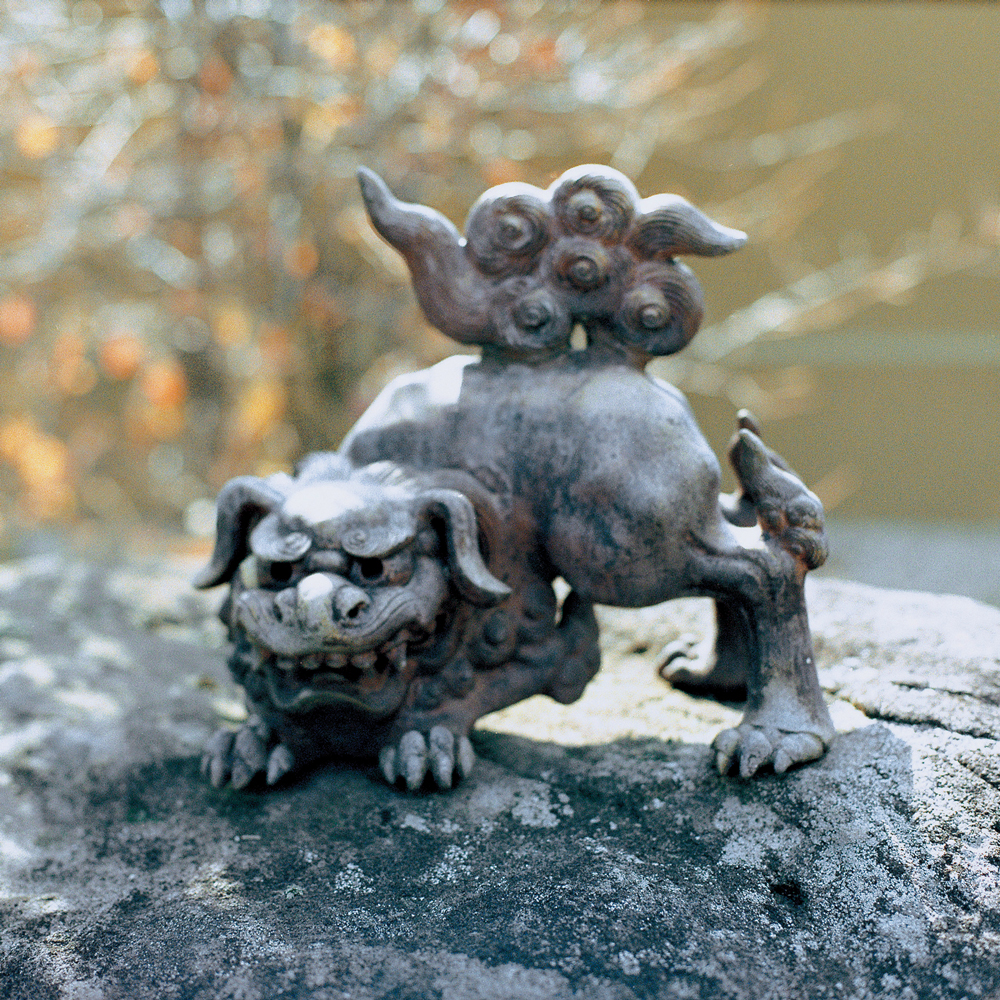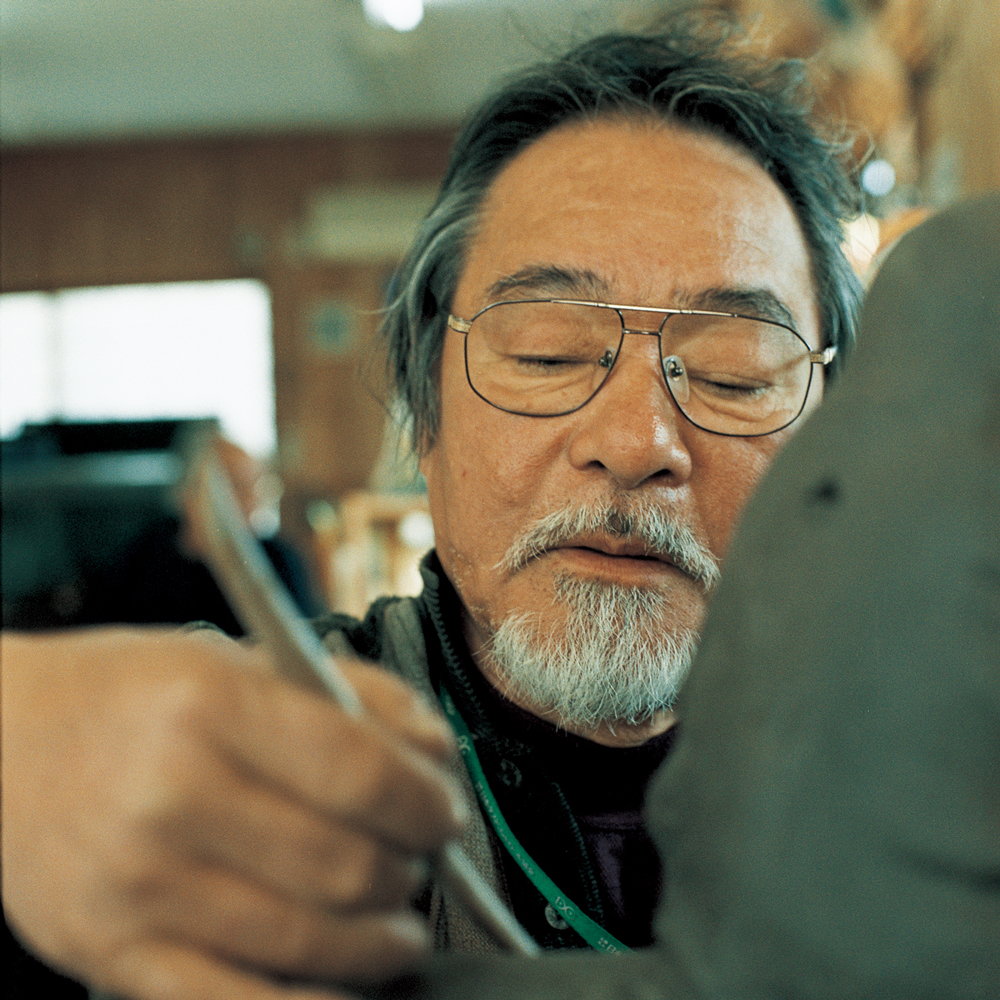Story 02 | Clay idols
We are travelling through the town of Imbe, passing dozens of red brick chimneys which rise up over tiled rooftops; passing thousands of stacked pieces of wood ready to heat the kilns (and send smoke up the chimneys); passing old ceramics factories; passing rice fields. It is late afternoon when we arrive at Toshin Fujiwara’s home. Outside, three dogs, a rooster, birds and fish in tanks. Inside, the wild smell of deer meat grilling on a stove. Fujiwara is sitting on a swivel chair beside a window. Today he is working on a small statue of an old man sitting atop a cow rendered in incredible detail. “Learning one form ― like this cow ― is not so hard, it takes about a year,” he says, “but learning many forms and styles is very difficult.”

Toshin Fujiwara has been producing Bizen-yaki since he was 28. He is a master of a figurative style known as Saiku. In the old days he made traditional Bizen-yaki, helping his father, but after his knees became damaged he moved to the Saiku style which he could make sitting upright. In Saiku the clay is sculpted into mythological figures to be purchased by Shrines, businessmen and the elderly. “Young people are not interested in this kind of thing as it’s becoming too expensive for them.” Even his smallest pieces cost nearly ¥50,000 because high quality clay is expensive and creating the pieces is slow and intricate. He builds his pieces slowly, first working on the legs and then the body one layer at a time. Because the pieces are always hollow, the hardest part is keeping the thickness of the clay even. Unevenness causes breakages, ruining days (or weeks) of work.
Fujiwara takes us to a room next door with a collection of his work; arching tigers with grotesque faces, a buddha carrying a giant frog, an old man riding on the back of a elephant. Originally the craftsmen who made Bizen-yaki were interested in producing functional items which could be used in everyday life; cups for drinking from, bowls for grinding things, simple small cups and bowls for everyday use. Over time Bizen-yaki came to be seen as a thing of beauty, and as the ideas of aesthetics took hold during the 16th Century Bizen-yaki became the preferred vessels for tea drinking ceremonies. Fujiwara’s pottering is meant to carry another kind of substance; his Saiku pieces are idols, carriers of spirits, or souls. “Once a company asked me to make a small statue of the company president, they wanted me to place a photo of the man inside his own statue so that when it was fired in the kiln the image would burn and his soul would be released inside the clay.”
< PAPERSKY no.35(2011)>












